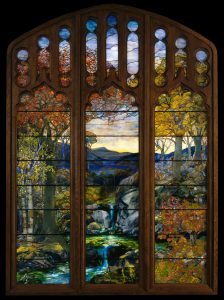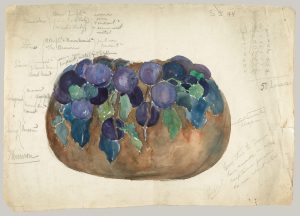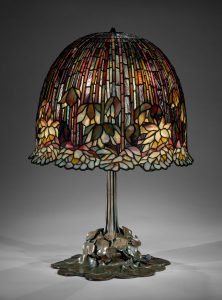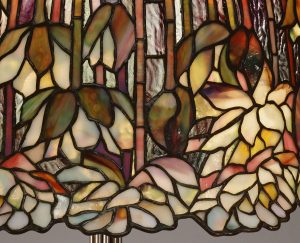Louis Comfort Tiffany, the man we think of whenever we see those colorful glass lamp in the white spot or our grandparent house. Tiffany is an iconic architecture figure during the Art Nouveau movement. His works included many things from stained glass to windows, lamps, glass mosaics, blown glass, ceramics, jewelry, enamels, and metalwork. He was the first Design Director at his family company, Tiffany&Co.

In 1885, Tiffany form his firm, he continued to take customer commission, and he also tried to develop his method of glass manufacture. After four years, he came up and registered a patent for opalescent window glass, a new formula of combining and manipulate colours to construct a unique range of hues and three- dimensional effects.

One of Tiffany biggest inspiration is natural and luminous colour. He used colour that often associates with flowers and plants on his glass works. His passion with nature and glass making technique led to his invention of the second method of construct glass vases and bowls. In 1893, Tiffany introduced his first blown- glass vases and bowls which called ”Favrile” which quickly gained its international recognition due to its surface iridescence and fabulous colour.


Source: http://www.morsemuseum.org/louis-comfort-tiffany
https://en.wikipedia.org/wiki/Louis_Comfort_Tiffany
Lecture summary:
This week we get to know more about the Art Nouveau Movement which happened in several places in the world. Art Nouveau was all about using of pattern and decoration, adding details from nature such as plants, flower, exotic animals and bird. During this time Mucha, a Czech illustrator who was influenced by Art Nouveau, he created a number of famous painting, illustrations, advertisement, postcards, and designs. We can also see Art Nouveau style in architecture, wallpaper and so on. Aubrey Beardsley in England was also famous for his Art Nouveau works and he was strongly influenced by the Japanese woodcuts. Moreover, we got to see some vital artist during this period such as Gustav Klimt ( Secessionist movement) and Egon Schiele. Finally, my favorite part in the lecture is the iconic sci-fi movie Journey to the moon which is a huge step forward in the movie industry.
